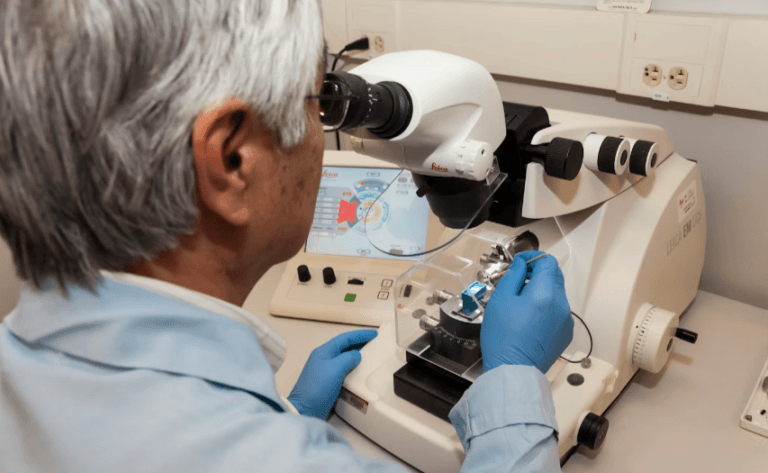Heal the Inner Child – Transform Your Whole Life
Ever wonder why certain situations make you react in ways that surprise even yourself? A minor criticism at work sends you spiraling, or feeling left out, triggers intense emotions you can’t quite explain. The answer might lie in how to understand and how to heal your
inner child.

How to Heal Your Inner Child
Healing our inner child isn’t just a trendy phrase—it’s a powerful journey toward deeper self-understanding and breaking free from old patterns. When we learn how to heal our inner child, we’re essentially giving that younger version of ourselves the love, care, and validation they needed but might not have received. Let’s explore this life-changing process together.
What Exactly Is Your Inner Child?
Your inner child represents the part of you that holds all your childhood memories, experiences, and emotions. Think of it as a collection of every moment from your younger years—both the happy times and the difficult ones.
Here’s what makes this concept so important: who you are today is directly shaped by what happened when you were growing up. Instead, it sticks around and shows up unexpectedly in your adult life. That’s why understanding your inner child matters so much for your present-day happiness and relationships.
Understanding Inner Child Work
Inner child work is the process of recognizing, understanding, and healing the emotional wounds from your childhood. This process isn’t a one-time fix—it’s an ongoing journey that involves unlearning old behaviors and replacing them with healthier ones.
The process involves reflecting on your past experiences and noticing how they affect your feelings today. When you identify the painful moments and areas you want to improve, you can change how you usually react to people and situations that push your buttons. Essentially, you’re learning to respond differently to your emotional triggers.
The Goal of Healing
According to psychologist Susan Albers, PsyD, healing your inner child means “reparenting yourself and giving yourself the emotional response you would have needed or wanted as a child, but doing it right now at your current stage in life.”
The ultimate goal? Making sure you fully process both the good and difficult experiences from your childhood so you can move forward with a clear understanding of your worth. You deserve to recognize yourself as a complete person with genuine thoughts and valid feelings. Let’s explore the specific wounds that might need healing.

The Five Inner Child Wounds
Understanding common inner child wounds helps you identify what might be affecting you. Here are the five main types:
- Abandonment Wound – Feeling left behind or rejected, leading to fear of being alone
- Rejection Wound – Experiencing feelings of not being wanted or accepted for who you are
- Humiliation Wound – Carrying shame from being criticized, mocked, or made to feel small
- Betrayal Wound – Difficulty trusting others due to broken promises or dishonesty
- Injustice Wound – Feeling that life isn’t fair, often from rigid or controlling environments
These wounds often overlap and can manifest in surprising ways in your daily life. Moving forward, let’s look at the signs that indicate your inner child might need some attention.
Signs of a Wounded Inner Child
How do you know if your inner child needs healing? Watch for these common signs:
- Overreacting to small situations – Minor criticisms feel like major attacks
- Fear of abandonment – Constantly worrying that people will leave you
- People-pleasing behaviors – Difficulty saying no or setting boundaries
- Difficulty trusting others – Keeping people at arm’s length to avoid getting hurt
- Perfectionism – Feeling like you’re never good enough, no matter what you achieve
- Emotional numbness – Shutting down feelings to avoid pain
- Self-sabotaging patterns – Unconsciously ruining good things in your life
Recognizing these patterns is the first step toward change. With that awareness, you can begin the healing process.
Your Inner Child Healing Toolkit
6 Powerful Methods
Method 1: Acknowledge Your Inner Child
The first step is simply listening to what your inner child has to say. When you validate your feelings instead of pushing them away, you’re permitting yourself to feel.
“As a child, you learn to cut yourself off from those feelings or ignore and avoid them,” explains Dr. Albers. “But as an adult, the first step is paying attention to when you are having a significant reaction to something and taking it seriously.”
Example: When you receive critical feedback at work and feel intense shame, pause and recognize that your inner child is reacting to past experiences of being judged. Remind yourself that feedback is about your job, not your worth. This awareness allows you to respond constructively instead of emotionally. After acknowledging these feelings, you can move to the next step.
Method 2: Understand Your Triggers
Learning what sets off your emotional reactions is essential for responding in healthier ways. When you know yourself well, you can spot patterns before they take control.
If you’re sensitive to feeling abandoned because of childhood experiences, you can watch for those feelings in your current relationships. You’ll notice when you’re being oversensitive and can respond more thoughtfully. This self-awareness becomes your superpower for change.
Method 3: Journal About Your Experiences
Writing down your thoughts and feelings is incredibly helpful for healing. Keep track of moments when your inner child shows up, how those moments make you feel, and how you respond.
Journaling helps you spot patterns in your behavior. You might notice that you always react a certain way when someone cancels plans, or that you feel small when someone raises their voice. These insights guide your healing journey. Once you’ve identified these patterns, you can actively work to change them.

Method 4: Practice Mirror Work
Mirror exercises help you flip negative beliefs into positive ones. Stand in front of a mirror and speak healing statements to yourself as you look into your reflection.
Try saying things like:
- “I am worthy of love and respect.”
- “I am good enough exactly as I am.”
- “I deserve happiness and peace.”
This practice helps reformulate the automatic negative thoughts that pop into your mind. It might feel awkward at first, but stick with it—the results are worth it. As you build this practice, consider adding another powerful tool.
Method 5: Write Letters to Your Inner Child
Writing letters creates a direct connection with your younger self. You can write to your inner child or from its perspective.
Writing to your inner child: Give yourself the love, compassion, and safety you needed back then. For example: “Dear little me, I see your fear of not being good enough, and I want you to know that you are loved, worthy, and capable of amazing things—no matter what anyone else says or does.”
Writing from your inner child: This helps illuminate where your wounds live and how they show up in your life today. Both approaches are powerful and work well together.
Method 6: Meditate With Your Inner Child
Visualization meditation creates a safe space for healing. Close your eyes and imagine your child self sitting next to you. Have a conversation with that younger version of yourself.
Tell them what they needed to hear back then. This practice often reveals deep insights into your wounds and the kind of healing you need. Many people find this method especially moving and transformative. However, for deeper wounds, you may need additional support.
Why Therapy Is Essential for Deep Healing
While self-help techniques are valuable, healing your inner child often requires professional support. This healing is especially true if you’ve experienced childhood trauma, abuse, or violence.
The Role of Cognitive Behavioral Therapy
“Cognitive behavioral therapy is a valuable approach for healing your inner child,” says Dr. Albers. “A therapist can work with you to uncover where your beliefs about yourself come from, especially those rooted in childhood.”
Through therapy, you can:
- Make connections between past experiences and current behaviors.
- Transform negative thoughts into compassionate and supportive ones.
- Develop healthier coping mechanisms.
- Process difficult memories in a safe environment.
When Professional Help Is Crucial
“It can be excruciating to confront your inner child because it can tap into some tough, painful memories,” notes Dr. Albers. A licensed clinical therapist can carefully guide you through the healing process, ensuring painful memories do not retraumatize you.
Working with a professional provides the patient with the calm guidance they need to revisit complex parts of their past safely. Therefore, don’t hesitate to reach out for help when you need it.

Frequently Asked Questions
How do I start my inner child healing?
Start by acknowledging that your inner child exists and deserves attention. Begin noticing when you have strong emotional reactions to situations. Ask yourself: “What does this remind me of from my childhood?” Journaling about these moments is a gentle way to begin the process.
What are the five inner child wounds?
The five main wounds are: abandonment (fear of being left), rejection (feeling unwanted), humiliation (carrying shame), betrayal (difficulty trusting), and injustice (feeling life isn’t fair). Most people experience more than one of these wounds.
How do I reparent my inner child?
Reparenting means giving yourself the emotional support you needed as a child. Talk to yourself with kindness, set healthy boundaries, validate your feelings, and make choices that prioritize your wellbeing. Treat yourself the way a loving parent would treat their child.
What is inner child trauma?
Inner child trauma refers to emotional wounds from childhood that continue to affect you in adulthood. This trauma includes experiences of neglect, abuse, criticism, abandonment, or any similar circumstances. These unhealed wounds influence your thoughts, feelings, and behaviors today.
What are the signs of a wounded inner child?
Common signs include overreacting to criticism, fear of abandonment, people-pleasing behaviors, difficulty trusting others, perfectionism, emotional numbness, and self-sabotaging patterns. You might also notice yourself feeling triggered by situations that remind you of childhood pain.
How do I heal myself?
Self-healing involves acknowledging your pain, understanding your triggers, practicing self-compassion, and using tools like journaling, mirror work, and meditation. However, working with a therapist is often necessary for processing deeper wounds safely and effectively.
Can you ever heal your inner child?
Yes! While healing is an ongoing journey rather than a destination, significant progress is absolutely possible. Many people experience profound transformation through consistent inner child work. You can develop healthier patterns, feel more at peace, and build better relationships.
How do I start reparenting myself?
Begin by identifying what you needed but didn’t receive as a child. Then, consciously give yourself those things now. This idea might include offering yourself words of encouragement, setting boundaries, allowing yourself to play and have fun, or simply validating your own feelings.
What triggers your inner child?
Common triggers include criticism, rejection, feeling ignored, unfair situations, broken promises, and feeling controlled. Your specific triggers depend on your unique childhood experiences. Paying attention to strong emotional reactions helps you identify your personal triggers.
Final Thoughts
Your Journey to Wholeness
Healing your inner child is one of the most important gifts you can give yourself. It’s not about erasing the past or pretending difficult things didn’t happen. Instead, it’s about acknowledging what occurred, processing those experiences with compassion, and moving forward with a deeper understanding of yourself.
Remember that healing isn’t linear. Some days will feel easier than others, and that’s completely normal. Be patient with yourself as you would be with a real child learning something new. You’re essentially relearning how to treat yourself with the kindness and respect you’ve always deserved.
Whether you’re just starting this journey or you’ve been working on it for a while, know that every step counts. Each time you acknowledge your feelings, challenge a negative belief, or choose self-compassion over self-criticism, you’re helping that little version of yourself feel seen, heard, and loved.
Your inner child has been waiting for this attention. By doing this work, you’re not just healing the past—you’re creating a healthier, happier future for yourself. And that’s something extraordinary.
References and Resources
- Albers, S. (2024). “Understanding and Healing Your Inner Child.” Cleveland Clinic Health Essentials.
- Whitfield, C. L. (2021). “Healing the Child Within: Discovery and Recovery for Adult Children of Dysfunctional Families.” Health Communications, Inc.
- Taylor, C. (2023). “The Science Behind Inner Child Work: How Childhood Experiences Shape Adult Behavior.” Journal of Psychological Research, 45(3), 234-251.
- American Psychological Association. (2024). “Cognitive Behavioral Therapy: Overview and Evidence-Based Applications.”
- Bradshaw, J. (2021). “Homecoming: Reclaiming and Healing Your Inner Child.” Bantam Books.
- National Institute of Mental Health. (2024). “Understanding Childhood Trauma and Its Long-Term Effects.”
5 Methods for Overcoming Inferiority Complex – Dr. Hassan Akinbiyi. https://drhassanrehab.com/5-methods-for-overcoming-inferiority-complex-drhassanrehab-hassan-akinbiyi-pmr-physiatry-business-of-rehab-physiatrist-postacute-acuterehab-inpatientrehab-snf/
Autism Therapy Workshops. https://www.besteveraba.com/blog/autism-therapy-workshops
How to Know If Therapy Is Right for You. https://www.tavahealth.com/blogs/how-to-know-if-therapy-is-right-for-you
Psychologist Chicago: How to Find Meaning out of Shame. https://symmetrycounseling.com/psychologist-chicago/how-to-find-meaning-out-of-shame/
Tatiana St. Germain | Coral Springs Counseling + Hypnotherapy | Bayview Therapy. https://www.bayviewtherapy.com/tatiana-st-germain
Healing the child within : discovery and recovery for adult… | Salina Public Library. https://discover.salinapubliclibrary.org/Record/1354?searchId=8818755&recordIndex=2&page=1
Note: If you’re struggling with trauma or mental health concerns, please reach out to a licensed mental health professional. You can find resources through the National Alliance on Mental Illness (NAMI) helpline: 1-800-950-NAMI (6264).
The Blue Genes Team
(w) mybluegenes.com
(e) rachele@ mybluegenes.com
danarachele30@gmail.com





